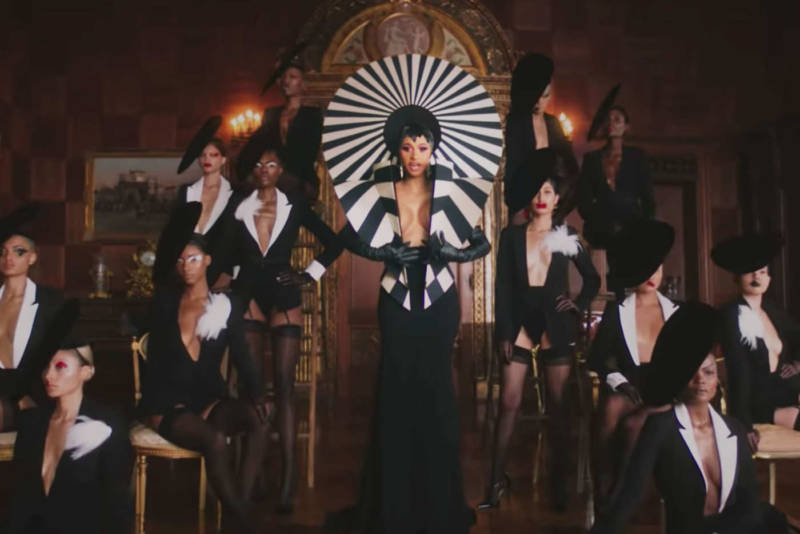Amanda Ortiz echoes the sentiment. After getting a job on the front desk at fitness center San Francisco Pole and Dance a year ago, Ortiz, a PhD. student, fell in love with pole dancing. "It was during a rough time in my life and I saw the effects pole dancing had on women and men of all backgrounds," she says.
Ortiz estimates that everyone who tries a class leaves with much more respect for those who dance professionally.
"It is probably some of the hardest work ever," she says, "and the best teachers are always current or former strippers. Everyone here is funny, kind and encouraging. I do think that the stigma is reducing."
Still others have mixed feelings about pole dancing going mainstream. Alexis Brooks danced in strip clubs for 13 years, stopping only after the combination of sky-high heels and a slippery tile floor at work caused her to break an ankle. She says that pole dancing on a sporting stage can give people unrealistic expectations: "People have to realize that nine times out of ten, they aren't going to see that level of pole dancing at the club. We don't have trainers and hours to perfect our moves."
Brooks is happy, however, to see more variety in popular depictions of pole dancing. "Traditionally, we're seen as either super glamorous and raking in the dough, or at rock bottom," she says. "The reality is somewhere in between."
Cardi B's NSFW "Money" video, then, might be the closest that mainstream culture has come to accurate commentary on the lives of pole dancers. In it, she honors her own past working in strip clubs—a job she says saved her from a "boyfriend who was beating my ass"—presenting it as serious work with major financial benefits. "People want me to be so full of shame that I used to dance," Cardi told The Guardian in 2017. "I learned a lot. I would never be ashamed of it.”
Indeed, the shift in the public perception of pole dancing has been most visible in music videos. While early on, artists like like Dr. Dre and Snoop Dogg used pole dancing as a means for objectification, within a decade it was socially acceptable enough for the decidedly non-edgy Enrique Iglesias to include in his video for "Dirty Dancer." In 2013, Bruno Mars put pole dancing at the center of a love triangle in the "Gorilla" video, and, a year later, Ne-Yo put dancers in mundane, everyday settings as a suggestion that it was something even middle-aged housewives and mousey librarians could enjoy.
Then came Rihanna and Beyoncé including poles in their respective videos for "Pour It Up" and "Partition," and ideas shifted about just who pole dancing was for. Their reframing of pole dancing, from entertainment for men to empowerment for women, not only opened doors for Cardi B but others—FKA Twigs recently used it to literally elevate her contemporary artistry to new, trippy heights.
Reality TV, too, has done a lot to normalize pole dancing. HBO's G String Divas started to de-stigmatize the job back in 2000, and today, Beyond The Pole shows the every day lives of professional dancers in Atlanta.
But it's Keeping Up With The Kardashians that did the most to take pole dancing mainstream. When 2007's Season 1 first showed a pole in Kris and Bruce's bedroom, it seemed risqué and over-the-top. When then-tweens Kendall and Kylie played on it—prompting Robin Antin to tell Kylie she was a "future Pussycat Doll"—it simultaneously caused a mountain of controversy and somehow made a pole at home seem somewhat mundane. By 2014, Kris, Kim and their friends were taking a pole dancing class on the show together—a relatively new form of exercise that has since boomed in popularity.
The pinnacle of pole dancing's mainstream acceptance arrives September 13 with the movie Hustlers, starring Jennifer Lopez, Constance Wu and Cardi B as a group of strip club employees banding together to "turn the tables on their Wall Street clients." The movie, based on a New York Magazine article about real-life dancers who swindled their richest clients out of thousands of dollars, is something that Nicki, the dancer from San Francisco, looks forward to seeing.
"Pole dancing really is an art form when it's done well," she says. "It is getting easier to see that dancing isn't just some seedy, taboo thing, as more women in the spotlight are embracing it."


